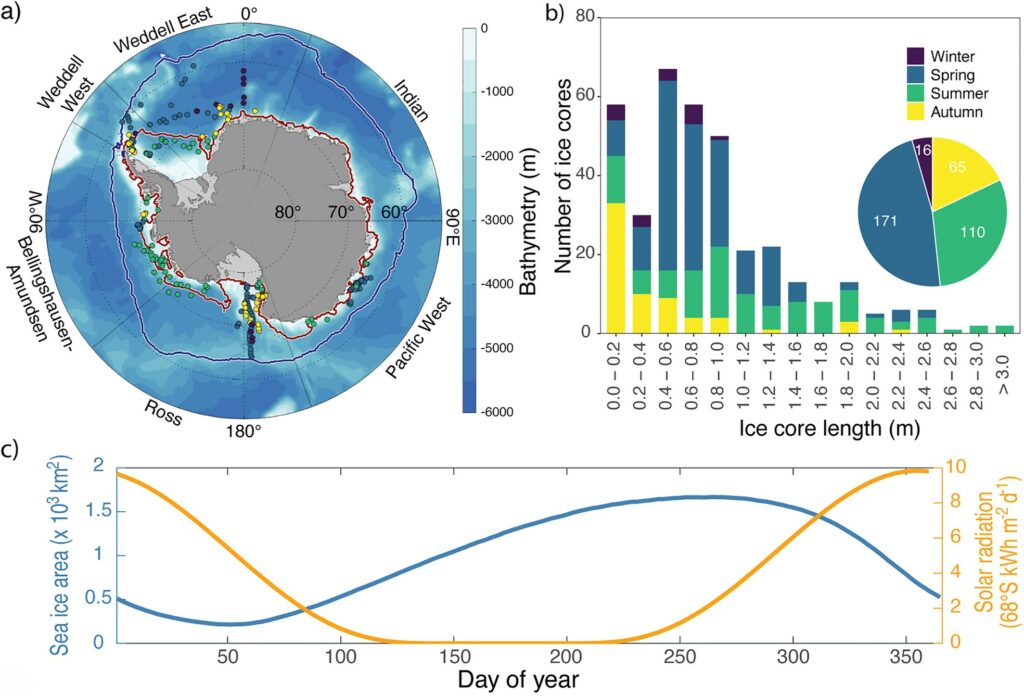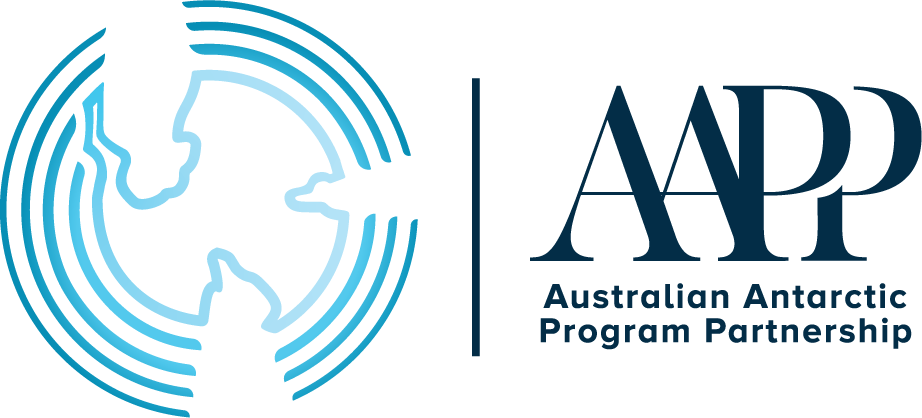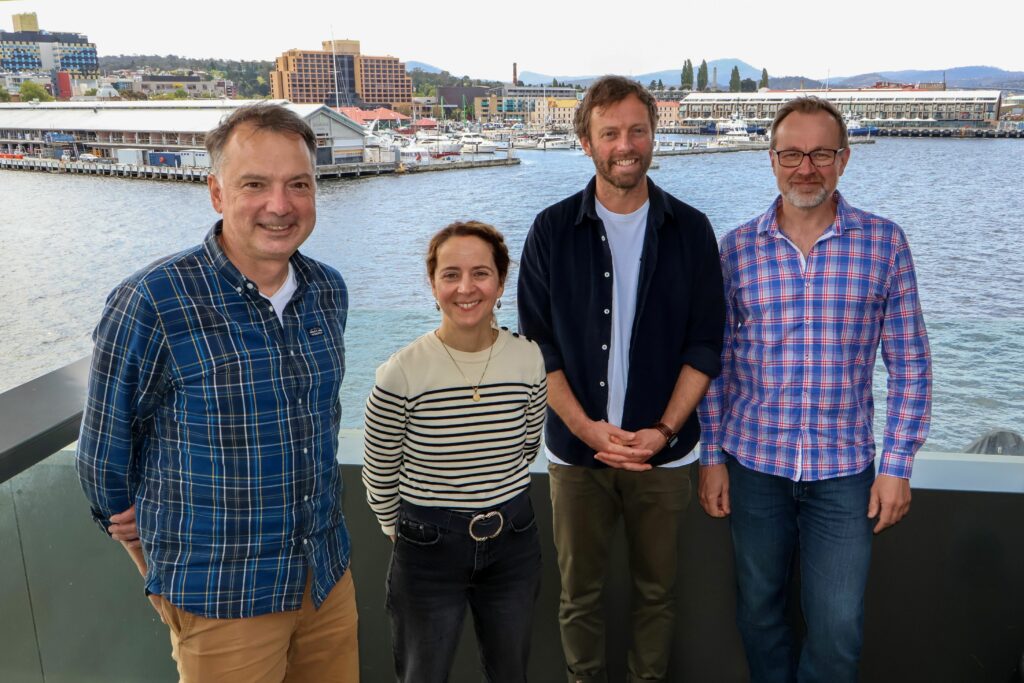‘Vast unseen meadow’: Annual growth of sea-ice algae measured
10 April 2025
Covering more than twice the area of Australia at its winter peak, Antarctic sea ice is one of the largest biomes on Earth, providing critical habitat for ice algae.
For the first time in thirty years, a team of Australian and international scientists has published a robust observation-based estimate of the annual growth of Antarctic sea-ice algae.
Lead author Laura Dalman, PhD candidate with the Australian Antarctic Program Partnership at UTAS, said their study highlights the importance of algae in Antarctic sea ice to marine food webs.
“Sea ice is to life in the Southern Ocean as soil is to a forest. We can think of algae living in and under Antarctic sea ice as a vast unseen meadow.”
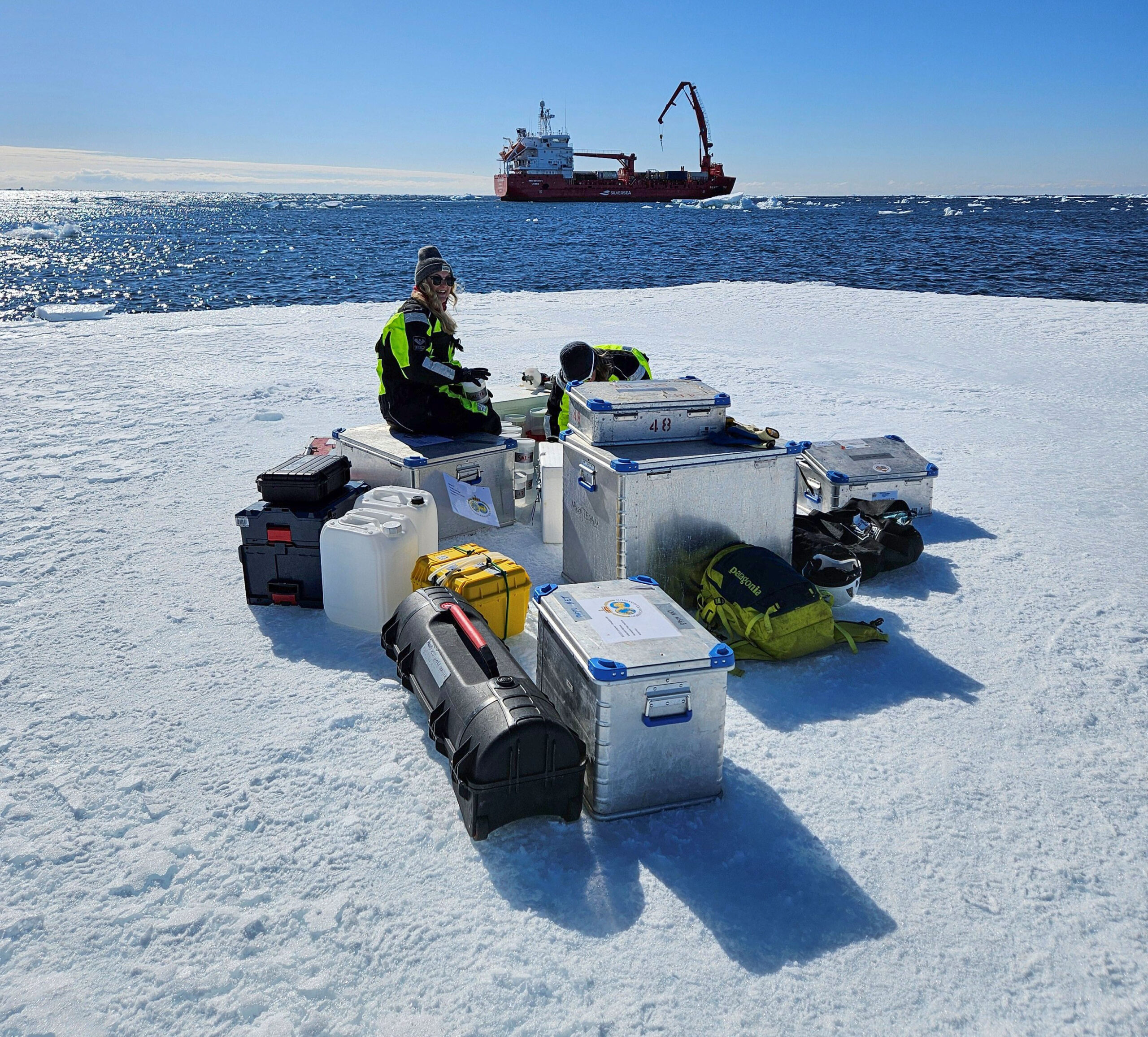
“Sea-ice algae are a vital, highly concentrated food source that underpin a diverse marine ecosystem, including Antarctic krill, fish, penguins, seabirds, whales, and the global fisheries reliant on Southern Ocean health.”
Sea-ice algae play an important role in Southern Ocean food webs because the microscopic plant-like organisms convert carbon dioxide into organic matter via photosynthesis. The rate at which organic carbon is created by photosynthesis is known as primary production. This organic matter is then available for the larger food web as a source of food.
“The Southern Ocean also plays a central role in global carbon cycling and climate regulation — but the contribution of sea-ice algae to organic carbon and primary production has not been revisited in more than thirty years,” Laura said.
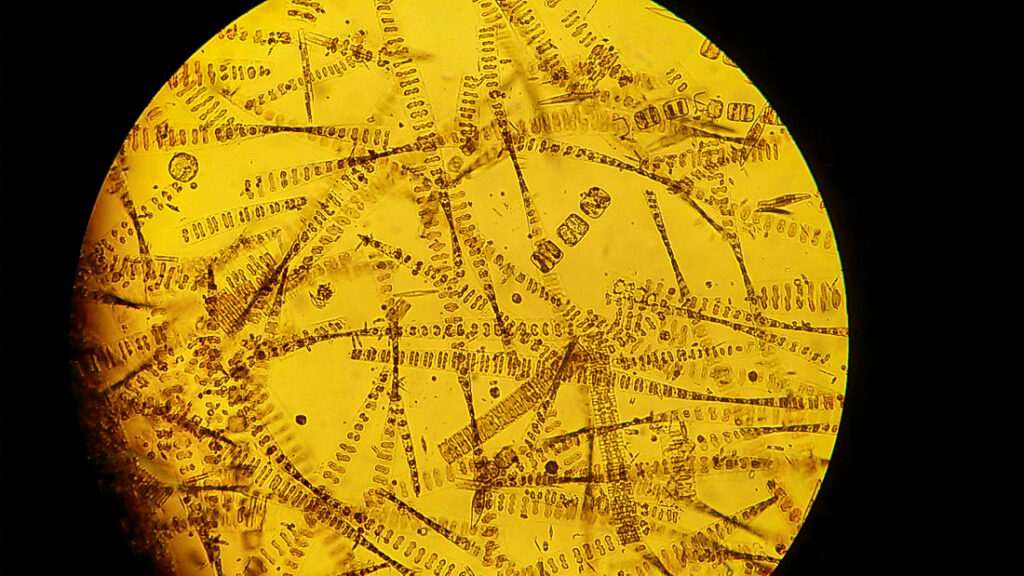
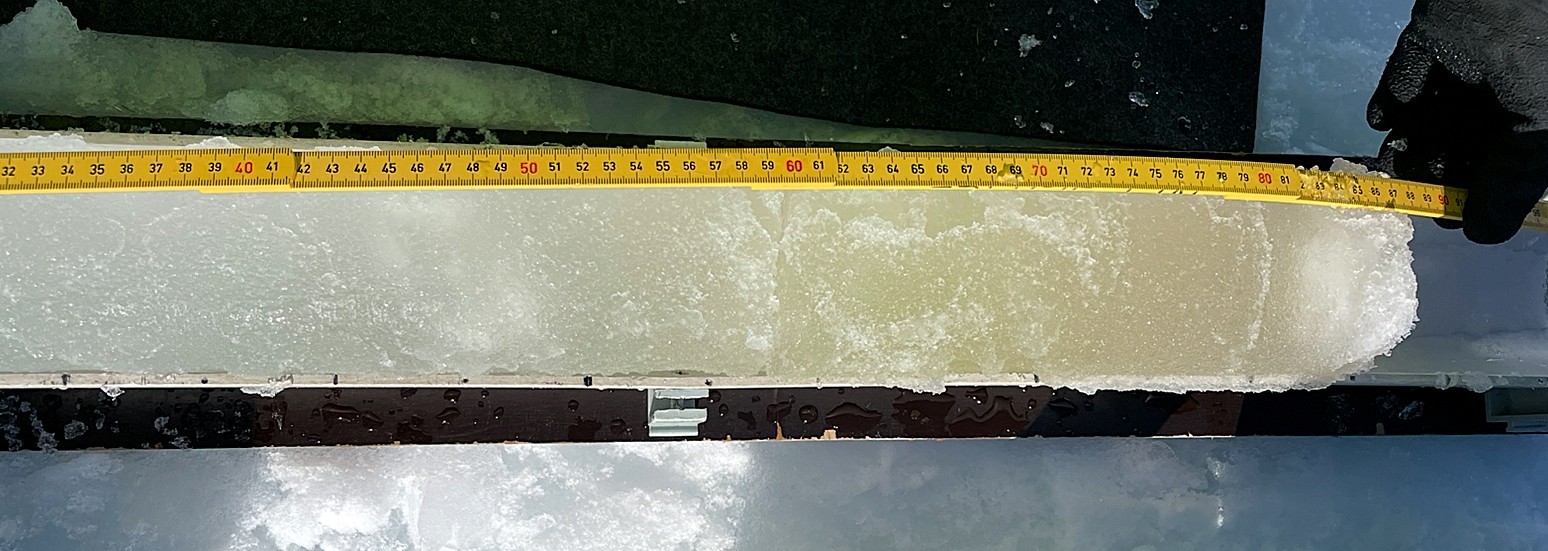
This study compiled a large dataset from 362 ice cores sampled between 1989 and 2019, and found that Antarctic sea-ice algae produce up to 33 million tonnes of organic carbon per year, or at least 15%–18% of the total (ice algae and phytoplankton) primary production in the Antarctic sea‐ice zone.
“Our estimate focuses on ‘net community production’, the amount of organic carbon that remains after accounting for what algae respire themselves and what’s consumed by other organisms.”
“Earlier estimates from the 1980s and 1990s were based on just a handful of ice cores and scaled up to represent the entire Antarctic sea-ice zone. In contrast, our study draws on data from over 360 cores across three decades.”
“While this makes our estimate more robust, it also means it’s more conservative — and more realistic. There are still important spatial and seasonal gaps to fill, but this work lays the foundation for better understanding the role of sea-ice algae in polar ecosystems.”
“Ice algae are fundamentally important food sources because their production occurs in locations and at times when other food sources are scarce.”
“Dramatic changes to the amount and persistence of sea ice mean potentially severe impacts for krill and other marine life reliant on the algae. Understanding this ecosystem is essential as climate change reshapes polar environments,” Laura said.
READ THE PAPER: Observation-Based Estimate of Net Community Production in Antarctic Sea Ice, by Laura A. Dalman, Klaus M. Meiners, David N. Thomas, Florian Deman, Sophie Bestley, Sébastien Moreau, Kevin R. Arrigo, Karley Campbell, Matthew Corkill, Stefano Cozzi, Bruno Delille, Agneta Fransson, Alexander D. Fraser, Sian F. Henley, Julie Janssens, Delphine Lannuzel, David R. Munro, Daiki Nomura, Louisa Norman, Stathys Papadimitriou, Christina Schallenberg, Jean-Louis Tison, Martin Vancoppenolle, Pier van der Merwe, François Fripiat
